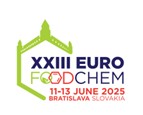Scientific journal
Journal of Food and Nutrition Research
Summary No. 1 / 2015
Chudy, S. – Pikul, J. – Rudzińska, M.
Effects of storage on lipid oxidation in milk and egg mixed powder
Journal of Food and Nutrition Research, 54, 2015, No. 1, s. 31-40
Sylwia Chudy, Department of Dairy Technology, Faculty of Food Science and Nutrition, Poznań University of Life Sciences, Wojska Polskiego 28, 60-637 Poznań, Poland. E-mail: sylwia.maria.chudy@gmail.com
Received 7 March 2014; 1st revised 22 April 2014; accepted 15 May 2014; published online 14 January 2015.
Summary: The aim of this study was to determine the effect of the duration of vacuum storage on oxidation of cholesterol and fatty acids, as well as on sensory properties of dried milk and egg mixed powder in comparison with whole milk powder and egg powder. Determination of the contents of fat and water, peroxide value and sensory evaluation were done according to American Oil Chemists’ Society and ISO official methods. The application of vacuum packaging did not protect powders against progressing changes in lipids. Composition of the powders determined their oxidation stability and formation of oxycholesterols, hydroperoxides, the value of the browning index, as well as sensory properties. After production and during storage of mixed powders, the evaluated indeces had values between those recorded for milk powder and egg powder. On the basis of these findings, it can be concluded that the analysed milk-egg powder retained its good sensory attributes up to the 12th month of storage in spite of physical and chemical changes taking place.
Keywords: milk powder; egg mix powder; storage; lipid oxidation; oxycholesterols
Download:
(pdf, 114.78 Kb, 3793x)










